Moment's Notice
Reviews of Recent Recordings
(continued)
Dave Douglas Quintet
Brazen Heart
Greenleaf Music GRE-CD-1044
Jon Irabagon featuring Tom Harrell
Behind the Sky
Irabbagast Records 004
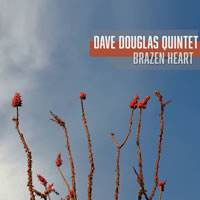
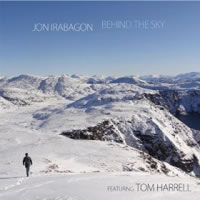 “After silence, that which comes nearest to expressing the inexpressible is music.”
“After silence, that which comes nearest to expressing the inexpressible is music.”
~Aldous Huxley
More than any other artistic discipline, music’s ability to transpose the complex outpouring of emotions that accompany the passing of a loved one into pure sound lends it a universal appeal. Dedicated to family members who died recently, Dave Douglas’ Brazen Heart and Jon Irabagon’s Behind the Sky are united in this spirit. Brazen Heart also shares this theme with Be Still, the 2012 debut of Douglas’ then newly formed quintet with saxophonist Irabagon, pianist Matt Mitchell, bassist Linda Oh and drummer Rudy Royston. The group’s premiere recording featured vocalist Aoife O’Donovan as an invited guest on a collection of hymns dedicated to Douglas’ late mother, Emily. Dave’s brother Damon passed away mere months before this new record was made, and although Douglas didn’t intend the album as an elegy, he does consider it a “call to arms” in the face of tragedy. The set’s passionate deportment sets it apart from the austerity of the group’s debut, finding greater aesthetic concordance with its visceral sophomore effort, Time Travel, from 2013.
In the years between the formation of Douglas’ current quintet and this release, the trumpeter studied extensively with Wayne Shorter, whose influence can be heard in the ensemble’s embrace of polyphony and through-composition. According to Douglas, “Wayne has said some things that are really profound, and it’s really influenced the way I think about writing for this band, and the way that we play.” Further reinforcing his connection to Shorter, Douglas co-leads Sound Prints with saxophonist Joe Lovano, an ensemble (also featuring Oh) dedicated to performing Shorter’s compositions and originals inspired by his singular writing style.
Adapting Shorter’s methodology, Douglas and his band members work collaboratively, reconfiguring standard forms into a hybrid between individual and collective improvisation. Oh and Royston underpin Mitchell’s prismatic cascades and the horn player’s dovetailing lines with brio, adroitly responding to the frontline’s dynamic exchanges, vacillating from background to foreground. Douglas is broadly expressive, unleashing bold brassy salvos on up-tempo fare like “Ocean Spray,” while conveying solemn introspection on more subdued numbers, such as “Pyrrhic Apology.” Shadowing the leader, Irabagon bolsters the proceedings with his quicksilver phrasing and prodigious articulation, ushering forth an elliptical barrage of staccato fragments on the former tune, reinforcing the reflective mood of the latter with lyrical resolve.
The nine new pieces that make up the majority of the session exemplify Douglas’ distinctive writing and compositional growth: “Variable Current” uses metric modulation to vary tempos; “Lone Wolf” and “Wake Up Claire” were conceived to compress the band’s expansive live energy into tautly composed miniatures; and “Inure Phase” effectively adapts a Steve Reich-inspired “phase” concept where each member plays the same lines in different time signatures. The majority of the set brims with such thrilling, high-wire theatrics, confirming Douglas’ “call to arms.” Yet for all the band’s technical savvy and creative dexterity, it’s Oh and Royston’s background in non-secular music and Douglas and Irabagon’s personal losses that imbue the straightforward, soulful renditions of two timeless spirituals, “Deep River” and “There Is A Balm In Gilead,” with an introspective yearning that conveys the album’s underlying theme most effectively.
Behind the Sky, released concurrently with Inaction is an Action, Irabagon’s experimental solo sopranino saxophone recording, was conceived during similar circumstances as Brazen Heart; Irabagon had just lost his grandmother, Purificacion, and uncle, Eduardo, as well as former mentor and employer Kenny Wheeler. Conveying an array of feelings that range from helplessness and anger to coping and acceptance, this captivating post-bop session reveals Irabagon as a maverick neo-traditionalist, recalling the mainstream territory he explored on The Observer, his 2009 debut for Concord Records.
In contrast to the aforementioned affair’s blue chip rhythm section, which included pianist Kenny Barron, bassist Rufus Reid, and drummer Victor Lewis – Stan Getz’s 1980’s backing band – this independently released effort finds Irabagon joined by a youthful trio of aesthetically aligned peers. Pianist Luis Perdomo, bassist Yasushi Nakamura and drummer Rudy Royston (who also plays with Irabagon in Douglas’ Quintet) are a dynamic rhythm section. Royston, in particular, is a powerhouse, driving his bandmates with unflagging intensity on the locomotive “The Cost of Modern Living” and the roiling soprano-driven feature “Sprites.”
Perdomo makes an excellent foil for the leader, with nimble flourishes that match the saxophonist’s effusive cadences in accuracy and ardor. Irabagon is a nearly peerless virtuoso, although his unbridled performances in bands like Mostly Other People Do the Killing have intermittently been known to evoke ironic pastiche rather than creative juxtaposition. Demonstrating a modicum of restraint, Irabagon eschews extreme effects in favor of a muscular lyricism, using precise embouchure control to extrapolate tuneful melodies with subtle variation, delivering some of his most focused performances on record. Though billed on the marquee, trumpeter Tom Harrell’s presence is secondary, as he only performs on three cuts. Nonetheless, Harrell’s few appearances are compelling; he offers evocative shadings on “Still Water,” “Obelisk” and “Eternal Springs,” providing mellifluous balance to Irabagon’s burly tone.
Punctuating visceral up-tempo excursions with more introspective fare, Irabagon reveals a talent for writing straightforward tunes that fit comfortably into traditional jazz vernacular. As implied by the recording’s backstory, there are numerous moods at play throughout the date; among the more assertive numbers, “Mr. Dazzler” lives up to its title, complete with rousing avant-blues choruses, while “Lost Ship at the Edge of the Sea” is the most introspective, a haunting duet between Perdomo’s neo-classical filigrees and the leader’s keening soprano, whose metered phrasing reveals a hard-earned emotional maturity. More celebratory than mournful, this vibrant homage pays respect to the departed with an essential gravitas. Although still early in his career, Behind the Sky is Irabagon’s most mature and refined statement as a leader to date.
–Troy Collins
Jamie Saft + Joe Mcphee + Joe Morris + Charles Downs
Ticonderoga
Clean Feed CF345CD
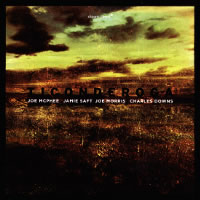 Grade inflation might sometimes be a reality when reviewing records with your faves on them, but it’s hard not to conclude that whenever Joe McPhee is on a recording he bumps it up a notch or three. The unpredictable and highly resourceful keyboardist Jamie Saft isn’t the first guy you’d think of for a session like this, but alongside the understated Charles Downs and Joe Morris (as a bassist), it’s a lineup that makes for an intriguing amalgam of improvisational approaches.
Grade inflation might sometimes be a reality when reviewing records with your faves on them, but it’s hard not to conclude that whenever Joe McPhee is on a recording he bumps it up a notch or three. The unpredictable and highly resourceful keyboardist Jamie Saft isn’t the first guy you’d think of for a session like this, but alongside the understated Charles Downs and Joe Morris (as a bassist), it’s a lineup that makes for an intriguing amalgam of improvisational approaches.
The four tracks aren’t mere blowing sessions, but almost like textural cycles with loads and loads of space. This is evident from Downs’ soft tattoos opening “Beyond Days,” a subtle vehicle for McPhee’s tenor lyricism and Morris’ exploratory bass. This piece, like the others, unfolds patiently and moves through passages of heat and density (with Saft bursting on piano while McPhee and Morris churn) as well as more pointillistic features. Downs is almost too muted in places (no great fault in a session like this), but it’s when Saft lights into a solo – making great, and mercurial use of preparations – that the drummer’s taut style makes sense. Elsewhere, one of the record’s pleasures is its earthiest track, “Simplicity of Man.” Its woozy and bluesy opening features great stuff from McPhee, all angular phrases and bell notes, like something from a fractured ritual. The group does work up the lather in time, and in the thick of the music’s bustling, shouting intensity (with Morris especially driving things), McPhee is compelling as he weaves all kinds of textural variations into his high heat.
The lengthy soprano piece “Leaves of Certain” is a nice changeup, with soft whistles and nice billowing piano chords (again deftly laced with preparations). And closing with “A Backward King,” the band starts off with a wounded balladic feeling that, to my ears, recalls Taylor and Lyons in Copenhagen over a half century ago. While not absolutely everything works in this compelling meeting of quite different improvisers, it’s that very sense of reaching and uncertainty across these tracks that makes Ticonderoga a winner overall.
–Jason Bivins
Nicole Mitchell + Tomeka Reid + Mike Reed
Artifacts
482 Music 482-1093
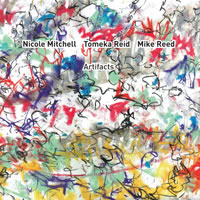 It’s not all the time that you come across a record that has both unique instrumentation and an absolutely A-plus repertory, but Artifacts is one such dilly. All three of these AACM musicians have been quite productive of late, with Mitchell and Reed in particular helming strong sequences of albums. But from the first bracing measures of Anthony Braxton’s “Composition 23B” – that killer unison! – I was hooked on this long love-letter to Chi, made up of tunes from a half-century’s Great Black Music.
It’s not all the time that you come across a record that has both unique instrumentation and an absolutely A-plus repertory, but Artifacts is one such dilly. All three of these AACM musicians have been quite productive of late, with Mitchell and Reed in particular helming strong sequences of albums. But from the first bracing measures of Anthony Braxton’s “Composition 23B” – that killer unison! – I was hooked on this long love-letter to Chi, made up of tunes from a half-century’s Great Black Music.
Reed is just cracking from the start, and Mitchell’s lithe, expressive flute is always a treat to hear (she shifts so gracefully between breathy staccato and warm lower register stuff, birdsong to grumbles too). But I keep returning to how outrageously good Tomeka Reid is on this date, swinging, scratching, and playing melody all over the place. And it’s one of those too-rare dates that is positively joyful as well. Hear this on the trio’s fabulous, dancing rendition of Roscoe Mitchell’s “Jo Jar,” and it’s like all these tunes were just made for this instrumentation. Reed does some almost second line stuff on the Fred Anderson/Jeff Parker medley “Bernice/Days Fly by with Ruby,” and against this Reid creates some downtuned drone effects while Mitchell trills and burbles intensely. Something about the sheer woodiness of the sound suggests not only obvious comparisons (Hemphill/Wadud or Threadgill/Deidre Murray) but (despite differing instrumentation) a John Carter small group.
Aside from the richness of the improvising and the overall sound, the disc is paced and sequenced really well, too. Leroy Jenkins’ “The Clown” is a very abstract, textural piece that hits at just the right point. It’s followed up righteously by Amina Claudine Myers’ “Have Mercy On Us,” with some tasty flute echo and droning, double-stopping cello, both effective in terms of the emotional content of the piece. A pair of Air tunes follow, Mitchell digging in hard on “B.K.” and following this with the deeply emotional “I’ll Be Right Here Waiting” (one of this author’s faves from that legendary combo). And after Muhal Richard Abrams’ craggy “Munkt Munk” (a lively course for this able trio) and the buoyant, exuberant dance that is Ed Wilkerson’s “Light on the Path,” this tremendous album is over before you know it. It’s easily one of the best things I’ve heard all year.
–Jason Bivins
The Necks
Vertigo
Northern Spy NS 067
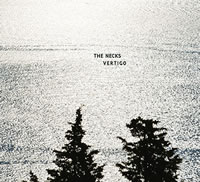 Hearing the Necks is always an experience in immersion, duration, and attention.
Hearing the Necks is always an experience in immersion, duration, and attention.
Over the last couple decades, they have modeled a distinctive amalgam of slow-moving compositional transformation through improvised elements that are central to their music’s realization. On albums like Ether or Hanging Garden, pianist/organist Chris Abrahams, drummer Tony Buck (who also uses percussion, electronics, and electric guitar on occasion), and bassist Lloyd Swanton conjure texture and long-form tapestries of sound that are more about efflux and color than linear expression.
Vertigo is different than many of their recent dates, in that it’s more condensed (just 44 minutes) and, at least superficially, a bit harsher. Abrahams plays clustered, dissonant chords over the drone of the opening minutes, with Swanton moaning away as Buck creates cymbal washes but also interjects suggestively. One listens always for the equivalent of leitmotifs in The Necks, and early on it becomes apparent that they’re interested in oscillation (and possibly its auditory effects, given the disc’s title). As the minutes drift by, different effects begin to whirl amid the group’s own momentum. First there’s a stretch made up of rainforest bells, a spiky arpeggiatio, and deep, lower register bomb drops. And then, almost imperceptibly (for that’s how things happen with this group), there’s a marvelously strange juxtaposition: broken glass, a deep groan, and what could for all the world be Taku Sugimoto.
The instruments blend, but Vertigo deals with jarring moments of tension quite regularly. For all they seem to invest in a kind of In a Silent Way vibe, with lush keyboard droning and descending chords, they regularly drop more bombs and Swanton uncoils some weird, rubbery bass glissandi. Even more jarring is the midway shift to a kind of monster-movie keyboard, and the subsequent left turn into consonance, a massive tonal shift and it feels like the broad seas depicted on the cover. And with a closing sequence filled with maritime and swirling electronics, it’s one of the least predictable and most immersive records The Necks have done in some time.
–Jason Bivins
Open Field + Burton Greene
Flower Stalk
Cipsela 002
Marcelo Dos Reis + Angélica V. Salvi
Concentric Rinds
Cipsela 004
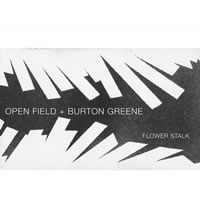
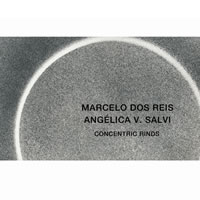 It’s relatively uncommon for a European country to be left out of the discussion of improvised music considering the vital revolutions that occurred across the continent, west and east, in the mid- to late-1960s. By the early 2000s, most writers (myself included) thought we had the area reasonably covered, and it was just a matter of discovering new and unheard individual talents in the field. That was precisely the time that a young Portuguese label called Clean Feed burst onto the scene. They had distribution networks in place and knew how to seek out sympathetic writers; alongside a few releases drawing from well-trod American and European scenes, one could hear the saxophonists Paõlo Curado and Rodrigo Amado, pianists João Paulo and Bernardo Sassetti; violinist Carlos “Zíngaro” Alves; bassist Carlos Barretto and drummer Bruno Pedroso. Naturally, as the Clean Feed catalog grew, the focus shifted away from Portuguese artists to a broader international perspective – admirable in its own way, but leaving those of us who were most curious about activities in Portugal without a well-stocked single shop.
It’s relatively uncommon for a European country to be left out of the discussion of improvised music considering the vital revolutions that occurred across the continent, west and east, in the mid- to late-1960s. By the early 2000s, most writers (myself included) thought we had the area reasonably covered, and it was just a matter of discovering new and unheard individual talents in the field. That was precisely the time that a young Portuguese label called Clean Feed burst onto the scene. They had distribution networks in place and knew how to seek out sympathetic writers; alongside a few releases drawing from well-trod American and European scenes, one could hear the saxophonists Paõlo Curado and Rodrigo Amado, pianists João Paulo and Bernardo Sassetti; violinist Carlos “Zíngaro” Alves; bassist Carlos Barretto and drummer Bruno Pedroso. Naturally, as the Clean Feed catalog grew, the focus shifted away from Portuguese artists to a broader international perspective – admirable in its own way, but leaving those of us who were most curious about activities in Portugal without a well-stocked single shop.
Cipsela is a new imprint based between Coimbra and Lisbon; of the four handsomely packaged releases in their catalog, three are focused on Portuguese contemporary improvisation. The label’s debut was a solo violin recital from “Zíngaro” recorded live in the resonant vaulted stones of the Santa Clara a Velha monastery in Coimbra, where he nudged wistful, balladic folk themes into growling, torqued asides and sharp, gritty dances with the heave of natural harmonic reverb. (See Stuart Broomer’s review in Issue 50). However, Cipsela’s subsequent releases have featured artists lesser known outside of Portugal.
Guitarist Marcelo Dos Reis and harpist Angélica V. Salvi have worked together in a variety of contexts, though Concentric Rinds is their first duo recording. Salvi is Spanish and lives in Portugal, and has performed solo and in chamber ensembles as well as a body-music duo with a masseuse. Dos Reis works in the string trio Open Field and in the string-brass quartet Chamber 4, and has played with a rather staggering number of international improvisers. The eight pieces on Concentric Rinds are relatively austere, opening with twangy blues and koto-like muted flecks on “Gravity,” the pair’s weave finding methodical symmetry in a series of elisions and parallel flights. Built from percussive rivulets stuck through with graceful harmonics, “Spirals” holds the lyric insistence of Jozef van Wissem in a dance-like improvised score, while “Depth” utilizes buzzing arco, voice and muted preparations to create a triangulated suite of wailing drones and stop-motion filaments. Certainly done a great service by the very present recording quality, every utterance and forethought from distended metallic shrieks to gentle, rattling half-songs appears with disarming clarity and the duo’s language fascinates throughout.
Flower Stalk is one of two Cipsela releases to feature an American musician (the other is Divergent Paths, CIP 003, with cellist Daniel Levin and altoist Rob Brown), and joins Amsterdam-based pianist Burton Greene (b. Chicago, 1937) with the Open Field trio – Dos Reis on guitar and voice, João Camões on viola, ney and percussion, and José Miguel Pereira on bass. Greene’s language has developed through melding the Tristano school and Horace Silver, Balkan music and Indian ragas with a palette that extends beyond the keyboard. These five improvisations posit Greene as a graceful sculptor, methodically forwarding glassine, robust progressions and subtly twisting them against an emergent landscape of meted harmonics. “Angels on the Roof” recalls Greene’s mid-60s work “Tree Theme,” in which a tonal center gradually branches out into paths and nodes that are followed in a collective upward path. “Out on the Edge” finds Greene working the strings with bells, torqued slides and strummed clatter in a stirring, lengthy dialogue with Camões’ maddening glissandi, while bass and guitar gnaw at single strokes and provide an insistent center. Like all Cipsela releases thus far, Flower Stalk is a shining example of rooted new music.
–Clifford Allen
Michael Pisaro +Phillip Bush + Greg Stuart
A mist is a collection of points
New World Records 80772-2
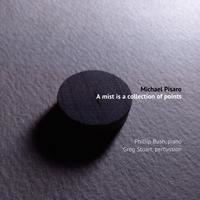 As composer, teacher, and performer, Michael Pisaro has been leaving an indelible mark on contemporary music. A steady output of releases has allowed listeners to keep tabs on the vast scope of his musical vision, ranging from improvisatory collaborations (his duo release “Schwarze Riesenfalter” with Graham Lambkin on Erstwhile Records), an expansive view of the relationship of natural and structured sounds as the basis of an evolving approach toward composition (the 3CD set “Continuum Unbound” on his own Gravity Waves label), densely interwoven structures for harsh noise (“White Metal” on the Makaam label), or a contemplative piece for solo guitar (“Melody, Silence (for solo guitar)” on Potlatch). This new release on New World Records, featuring Pisaro’s composition “A mist is a collection of points” for piano, percussion, and sine tones, hones in on some of the integral elements of his work; the notions of how tones and resonances accrue and interact within a listening space.
As composer, teacher, and performer, Michael Pisaro has been leaving an indelible mark on contemporary music. A steady output of releases has allowed listeners to keep tabs on the vast scope of his musical vision, ranging from improvisatory collaborations (his duo release “Schwarze Riesenfalter” with Graham Lambkin on Erstwhile Records), an expansive view of the relationship of natural and structured sounds as the basis of an evolving approach toward composition (the 3CD set “Continuum Unbound” on his own Gravity Waves label), densely interwoven structures for harsh noise (“White Metal” on the Makaam label), or a contemplative piece for solo guitar (“Melody, Silence (for solo guitar)” on Potlatch). This new release on New World Records, featuring Pisaro’s composition “A mist is a collection of points” for piano, percussion, and sine tones, hones in on some of the integral elements of his work; the notions of how tones and resonances accrue and interact within a listening space.
The liner notes begin with a quote from Pisaro about the piece: “A mist is a collection of points. But every point has the mist as a context. In this piece a point (i.e., a note) does not occur in a vacuum. It is let loose in an environment in which it can rebound (i.e., resonate) to varying degrees. The work is essentially about the morphology and topography of this resonance.” Things begin with hushed quavering overtones in to which a dark bass piano note is introduced. A careful listen reveals the way that overtone harmonics, piano attack and string decay begin to gather in to overlapping scrims right from the first moments.
Pianist Phillip Bush immediately shows how carefully attuned he is to Pisaro’s structures, situating notes within the open progression of the piece with a keen ear for the qualities of the instrument’s inherent vibrations, letting the low bass rumbles and natural harmonics hang within the sonic space. Timing is key and Bush allows the progression of notes to breathe within the gradual evolution, building densities at times and then allowing the pace to open with an organic sense. Jumping across registers and broken by pauses, an awareness of tonal development is often more intuited than explicitly stated. Though when a melodic kernel is introduced at the opening section of Part II, the impact is particularly haunting in contrast to the opacities of the opening movement. Choice of pitch is always precisely measured against the countering harmonics of percussion and sine waves.
Greg Stuart’s transparent percussion work is an essential element to the piece, as has been the case on many of Pisaro’s recordings. Whether on bowed or struck crotale, bass drum, or vibraphone, he controls attack, placing the resonant vibrations of the instruments in considered relationships to the frequencies of the sine tones, creating shifting oscillations within the hanging vibrations of the piano. His presence is felt throughout Part I, as it becomes increasingly integral to the timbral organization of the music. This emerges particularly in the later section of Part II, where hanging piano tones, coursing sine tones, and vibraphone move in and out of sync with each other, creating an engulfing aural miasma. Likewise, at the mid-point of Part III, the sizzle of handfuls of rice spilling across a cymbal brings a stark timbral shift to the music, playing off of high-register piano notes and low, dark sine tones. His control of the trajectory of the crackles and splashes is a guiding force as the piece draws to its conclusion.
Pisaro’s use of sine tones draws on his rich harmonic sensibility as well as his deep-seated mastery of the physical properties of the placement of difference tones and overtones in proximity. In further notes to the piece, Pisaro writes: “There are the individual droplets, but then there are the forces that hold them in suspension and with enough proximity that we recognize coherence. Inside the mist there might be places where it seems to disappear altogether, where it becomes atomized and separate, even though, from a distance away one is still in the midst (of the mist). There might also be places where the mist becomes so dense that is more like a wall. We live in a kind of mist as well, in a world where there is neither absolute clarity nor absolute opacity. There are only degrees or intensities of these.” In this composition, his innate adeptness at creating structures which accentuate the proximity of the natural resonances of piano and percussion in combination with the subtly colored use of sine tones, serves to bring out the shifting strata of the elemental parts.
–Michael Rosenstein